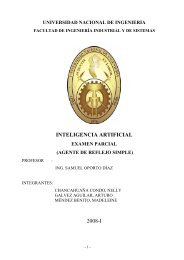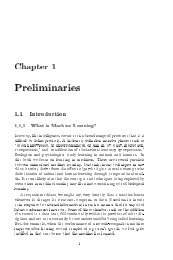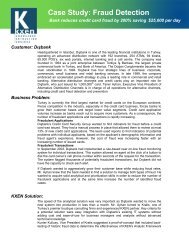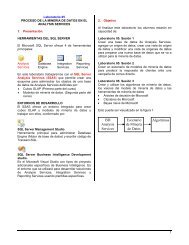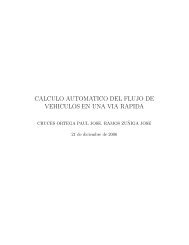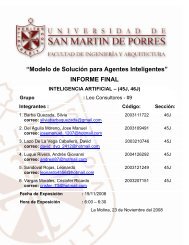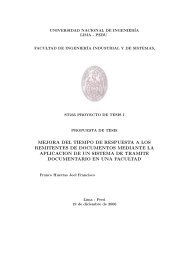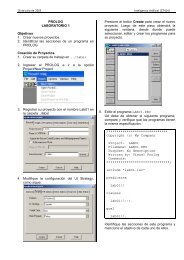2 Credit Card Fraud Detection using Hidden Markov ... - Wiphala.net
2 Credit Card Fraud Detection using Hidden Markov ... - Wiphala.net
2 Credit Card Fraud Detection using Hidden Markov ... - Wiphala.net
You also want an ePaper? Increase the reach of your titles
YUMPU automatically turns print PDFs into web optimized ePapers that Google loves.
This article has been accepted for publication in a future issue of this journal, but has not been fully edited. Content may change prior to final publication.IEEE TRANSACTIONS ON DEPEDABLE AND SECURE COMPUTINGBarclaycard, the largest credit card company in the UK, towards the end of the last century [2].Retailers like Wal-Mart typically handle much larger number of credit card transactionsincluding on-line and regular purchases. As the number of credit card users rises worldwide, theopportunities for attackers to steal credit card details and subsequently commit fraud are alsoincreasing. The total credit card fraud in the USA itself is reported to be $2.7 billion in 2005 andestimated to be $3.0 billion in 2006 out of which $1.6 billion and $1.7 billion, respectively, arethe estimates of on-line fraud [3].<strong>Credit</strong> card based purchases can be categorized into two types: (a) Physical card and (b)Virtual card. In a physical card based purchase, the cardholder presents his card physically to amerchant for making a payment. To carry out fraudulent transactions in this kind of purchase, anattacker has to steal the credit card. If the cardholder does not realize the loss of card, it can leadto a substantial financial loss to the credit card company. In the second kind of purchase, onlysome important information about a card (card number, expiry date, secure code) is required tomake the payment. Such purchases are normally done on the Inter<strong>net</strong> or over telephone. Tocommit fraud in these types of purchases, a fraudster simply needs to know the card details. Mostof the time, the genuine cardholder is not aware that someone else has seen or stolen his cardinformation. The only way to detect this kind of fraud is to analyze the spending patterns onevery card and to figure out any inconsistency with respect to the “usual” spending patterns.<strong>Fraud</strong> detection based on the analysis of existing purchase data of cardholder is a promising wayto reduce the rate of successful credit card frauds. Since humans tend to exhibit specificbehavioristic profiles, every cardholder can be represented by a set of patterns containinginformation about the typical purchase category, the time since the last purchase, the amount ofmoney spent, etc. Deviation from such patterns is a potential threat to the system.3



